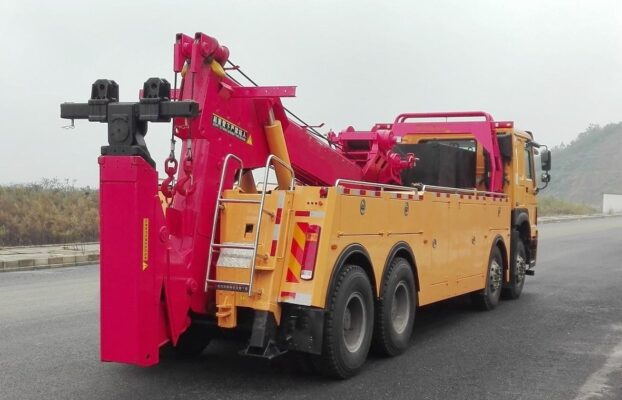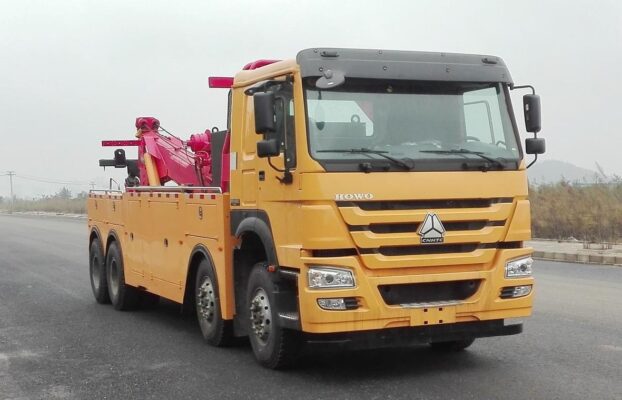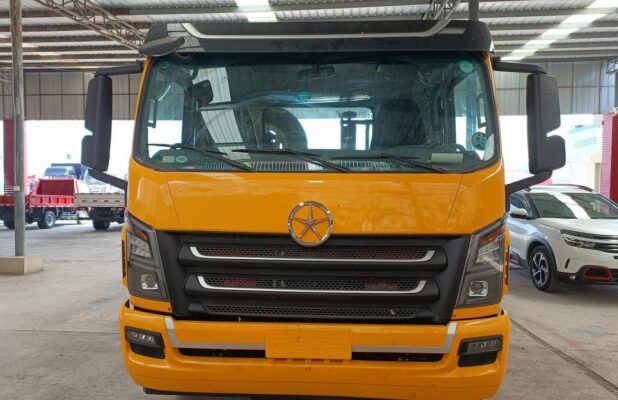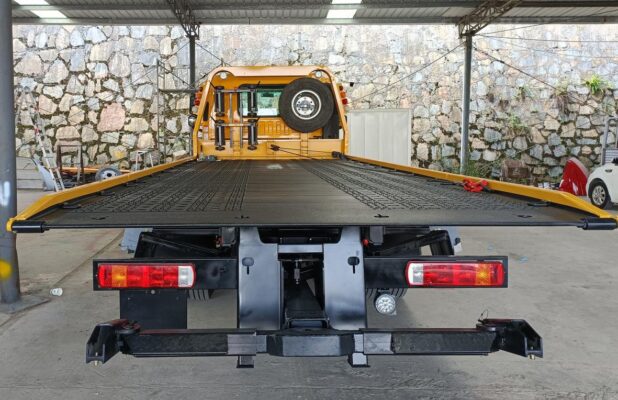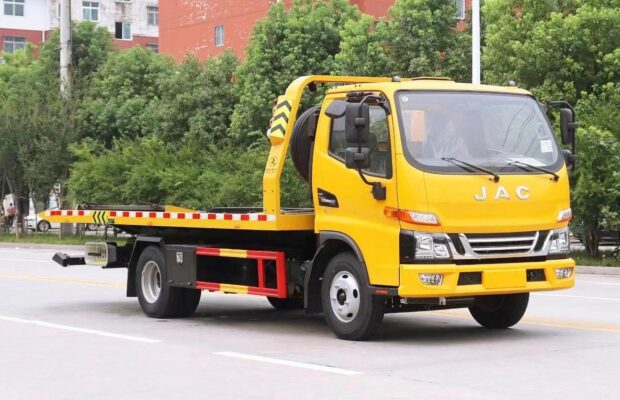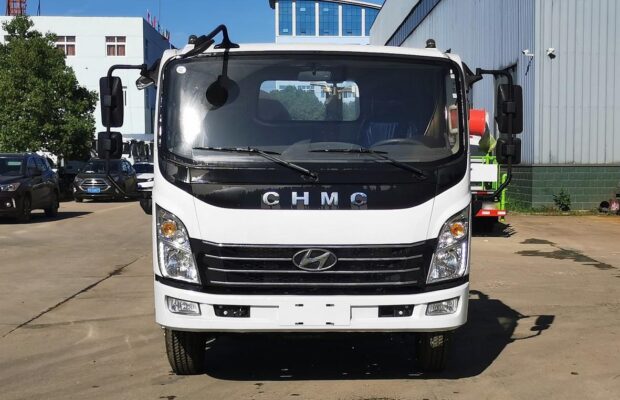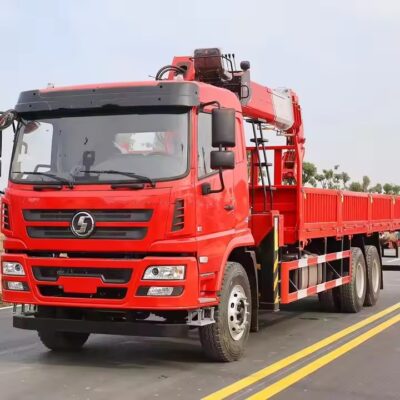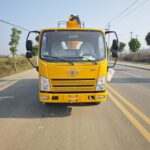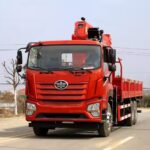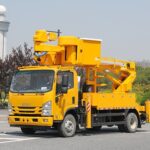With increasing urban development and the need for high-rise construction, tower cranes have become integral components of construction sites worldwide. Tuy nhiên, these cranes are highly susceptible to strong winds, especially during typhoons. Typhoons, known for their high-intensity winds, can have profound effects on the structural integrity, sự ổn định, and overall safety of tower craneS. This document delves into the impact of wind forces on the structural strength and stability of tower craneS, examining wind load effects, and proposes countermeasures to enhance crane resilience in typhoon conditions.
TÔI. The Impact of Wind on Tower Cranes
Wind exerts significant forces on tower craneS, creating stress on various structural components and affecting stability. The two primary areas affected are:
- Structural Strength: Wind-induced loads impose stress on the crane’s truss and boom structures.
- Sự ổn định: Wind can create tipping moments that challenge the crane’s center of gravity and overall balance.
MỘT. The Effect of Wind on Structural Strength
When wind blows perpendicular to a crane’s boom, it generates substantial wind loads on both the boom and any load that might be lifted. This wind load creates a torque MM on the crane body, which acts upon the four-plane truss structure of the crane. The stress caused by wind on the crane’s truss can be categorized into two primary types:
- Wind-Induced Stress on Diagonal Bracing:
The wind load acting on the crane boom and the load can be broken down into components that exert stress, primarily on the crane’s diagonal bracing. This stress, represented as σ1\sigma_1, is directly proportional to the magnitude of the wind load and the horizontal distance between the wind’s point of action and the crane body.- High Wind Loads and Long Boom Radius: With an increase in the wind load and the boom’s radius, σ1\sigma_1 on the diagonal bracing also rises. It has been observed that in most cases, σ1\sigma_1 due to wind load exceeds the stresses caused by the boom’s self-weight and rotational inertia (denoted as σ2\sigma_2).
- Implications for Structural Design: Given that wind load exerts more control over stress levels in the diagonal bracing, especially at higher boom radii, crane designs must accommodate the risk of truss instability. Vertical wind loads are particularly concerning because they can lead to truss buckling or failure.
- Effect of Head-On Winds on Boom Tilt:
When the wind blows directly towards the crane boom, it produces a rearward bending moment about the boom’s base hinge. If the crane is positioned with minimal boom radius and the wind load reaches a high enough intensity, it can counterbalance the forward bending moment caused by the boom’s own weight. This can cause the boom to tilt backward, a potentially catastrophic situation if the crane lacks an anti-tilt device or if such a device fails.
Tóm lại, wind loads can induce critical stress on tower crane trusses, and head-on winds can create backward tilt moments. To counter these risks, crane designs should incorporate adequate anti-tilt mechanisms and ensure that diagonal bracing is capable of withstanding anticipated wind loads.
B. The Effect of Wind on Stability
The stability of a tower crane is largely determined by the sum of moments acting on it. If these moments result in a net stabilizing effect, the crane remains upright; Tuy nhiên, if tipping moments dominate, the crane becomes prone to overturning. Factors that contribute to a crane’s stability under windy conditions include:
- Stabilizing vs. Tipping Moments:
- With a Lifted Load: When a crane lifts its maximum rated load, the crane’s self-weight provides a stabilizing moment M1M_1, while the lifting load and wind load combine to create a tipping moment M2M_2.
- Critical Stability Threshold: For a given wind load F1wF_{1w}, if M1+M2=0M_1 + M_2 = 0, the crane is in a critical stability state. Should the wind load increase such that F1w>FwF_{1w} > F_w, the crane will tip over.
- Unloaded Crane Stability:
When unloaded, a crane relies on its self-weight to remain stable. If a headwind is strong enough, it creates a tipping moment that can exceed the stabilizing moment provided by the crane’s self-weight, especially if the center of gravity is positioned rearward to balance the crane under load. Under strong wind conditions, this can lead to backward tipping.
The above factors highlight the need for crane design standards to incorporate strong stabilizing moments and anti-tipping measures that account for wind forces, both when loaded and unloaded.
C. Impact of Wind Load on Boom and Crane Tilt
The impact of wind load on crane tilt is particularly severe for luffing cranes, which rely on variable boom angles and can be at risk of backward tilting when subjected to strong headwinds. Specific considerations include:
- Luffing Cranes: In a luffing crane, a headwind blowing against the boom at a small radius generates a rearward moment about the boom hinge. If the crane does not have an operational anti-tilt device or if the device fails, the boom could tilt backward. This backward tilt compromises the structural integrity of the crane and can result in severe damage.
- Fixed-Jib and Horizontal Trolley Luffing Cranes: For these crane types, strong headwinds can lead to forward tipping, particularly under rated load conditions. To prevent forward tipping, crane designs often position the center of gravity rearward, which, while stabilizing under load, may lead to backward tilting when the crane is unloaded.
II. Countermeasures and Preventive Measures for Tower Crane Wind Resistance
Given the profound impact of wind loads on tower crane structural integrity and stability, a series of countermeasures are essential to protect cranes from strong typhoons:
MỘT. Wind-Resistant Design Enhancements
- Anti-Tilt Mechanisms:
Anti-tilt devices are crucial for preventing backward tipping when a headwind counteracts the crane’s forward bending moment. These devices should be tested and maintained to ensure effectiveness under high wind conditions. - Enhanced Truss Strength:
Reinforcing diagonal bracing and truss components is vital to withstand the increased stress caused by perpendicular wind loads. By strengthening these components, cranes can better resist truss instability under high wind conditions. - Wind Load Calculation Standards:
Using advanced wind load calculation models, crane designs should incorporate high-wind load scenarios to ensure structural resilience. These models should align with updated crane design standards such as GB38Ⅱ and GB/T13752, which set guidelines for stability and stress under wind loads.
B. Operational Safety Measures
- Weather Monitoring Systems:
Construction sites should implement real-time weather monitoring systems to alert crane operators of approaching typhoons or sudden wind increases. These alerts can help operators secure cranes or initiate shutdown procedures before wind speeds reach dangerous levels. - Adjustable Boom Angles and Heights:
Cranes should have flexible boom angles and adjustable heights that allow operators to reposition the crane and reduce wind load during typhoons. Ví dụ, lowering the boom can reduce the crane’s exposure to high wind forces, improving stability. - Safety Training and Emergency Protocols:
Crane operators and construction site staff should undergo regular training on emergency protocols specific to high wind conditions. This includes procedures for securing cranes and minimizing the risk of tipping or structural damage during typhoons. - Enhanced Anchoring Systems:
During strong wind events, cranes should be anchored securely to prevent unintended movement or tipping. Anchoring systems should be reinforced and tested regularly to ensure their reliability in typhoon conditions.
C. Pre-Typhoon Precautions
- Securing Load and Equipment:
Prior to a typhoon, all loads should be lowered and secured, and loose equipment on or around the crane should be removed or fastened to prevent wind-induced hazards. - Reducing Wind Resistance Profile:
Cranes can reduce their wind resistance profile by retracting the boom, nếu có thể, and positioning the crane body to face the wind in a way that minimizes surface area exposure. This reduces the wind load and torque acting on the crane. - Regular Maintenance and Inspection:
Cranes should undergo routine maintenance checks to verify the integrity of all structural and mechanical components, particularly those susceptible to wear and stress from high wind loads.
Phần kết luận
Typhoons pose a significant threat to the structural integrity and stability of tower craneS. Through careful design considerations, operational adjustments, and preventive measures, tower cranes can be better protected against the risks posed by strong winds. Ensuring that cranes are equipped with robust anti-tilt devices, enhanced truss strength, and effective anchoring systems can greatly reduce the risk of tipping or structural failure. Bảo trì thường xuyên, weather monitoring, and adherence to wind load calculation standards are crucial to achieving safe crane operation during typhoons. Through these comprehensive measures, construction sites can enhance the safety and resilience of tower craneS, ensuring they remain stable and secure even in extreme weather conditions.

